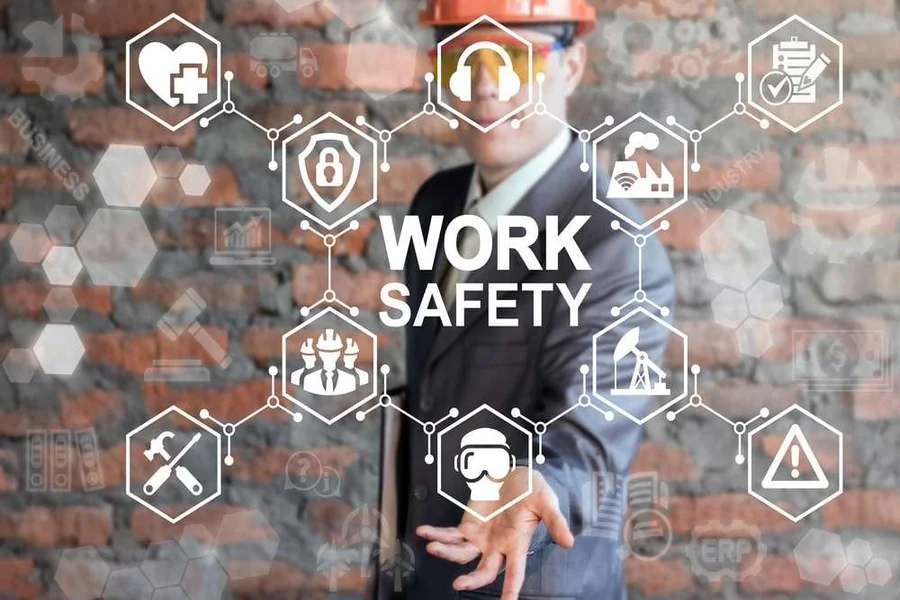Key Takeaways
- Comprehensive safety programs are crucial for minimizing workplace injuries and supporting ongoing productivity.
- Regular training sessions and thorough hazard assessments form the backbone of robust safety initiatives.
- Active employee engagement is fundamental to maintaining a vigilant, accountable workplace culture.
Table of Contents
- Importance of Workplace Safety
- Developing a Safety Program
- Employee Training and Education
- Hazard Identification and Assessment
- Implementing Safety Controls
- Monitoring and Evaluating Safety Programs
- Engaging Employees in Safety Culture
- Conclusion
Creating a safe workplace goes beyond compliance; it fosters an environment where employees feel protected and valued. Effective safety programs minimize the risk of accidents and injuries and contribute to higher morale, productivity, and retention. By taking a proactive approach, organizations can reduce hazards before they become serious issues, ensuring that safety is woven into daily routines rather than treated as an afterthought. Clear policies, consistent training, and strong leadership support form the foundation of a culture where safety is prioritized ปวดขา.
To make these programs successful, businesses should regularly assess workplace risks, provide ongoing education, and encourage open communication about safety concerns. When employees are empowered to participate in shaping safety protocols, they become more invested in maintaining them. For organizations looking to deepen their understanding of best practices and practical steps to build stronger safety systems, it can be helpful to learn more through reputable resources and industry guidelines.
Importance of Workplace Safety
Workplace injuries can set off a chain reaction of adverse outcomes: projects stall, productivity drops, medical and insurance expenses rise, legal complications emerge, and the organization’s reputation takes a hit. In 2023, the U.S. Bureau of Labor Statistics tallied 2.6 million nonfatal occupational injuries and illnesses in the private sector alone, indicating the persistent need for meticulous safety oversight and structure. The immediate effects of injuries—such as treating the injured employee and investigating the incident—are only part of the cost. Long-term effects, like damaged morale and increased turnover, can be just as costly.
Establishing a proactive safety culture also helps businesses avoid costly fines and litigation that may result from regulatory violations. Beyond regulatory and ethical imperatives, investing in robust safety management can enhance business continuity, help maintain customer confidence, and make a decisive difference in the competitive market. An enterprise that values its people’s well-being and demonstrates a genuine commitment to health and safety will see reduced absenteeism, greater engagement, and improved long-term profitability.
Developing a Safety Program
Building an effective workplace safety program involves detailed planning, clear communication, and broad-based support across all levels of the organization. One of the most important initial steps is a visible, unwavering commitment from management. Leaders who allocate resources, set clear priorities, and consistently reinforce safety messaging model desired behaviors and establish safety as a non-negotiable workplace value. This leadership buy-in should be mirrored by a system that welcomes and incorporates employee feedback at all stages, ensuring that policies reflect real-world working conditions and address genuine concerns.
- Management Commitment: Leaders must actively support safety through regular training, resource allocation, and responding to employee input. Their involvement fosters safety culture across all levels.
- Employee Involvement: Engaging employees in hazard identification and policy review ensures safety measures reflect daily realities. Respecting their input encourages adherence and proactive reporting.
- Clear Policies: Accessible, well-documented safety policies clarify expectations, reporting responsibilities, and steps to take during hazards or incidents.
Employee Training and Education
Meaningful safety training goes far beyond a brief onboarding session. It should be seen as an ongoing investment in workforce capabilities, building knowledge and confidence. Regular and relevant sessions reinforce safe habits and alert employees to evolving hazards. Well-trained staff have the confidence to respond appropriately to emergencies, recognize new or unusual risks, and share critical information with colleagues or supervisors to prevent harm before it happens.
- Train employees to use all tools, equipment, and machinery correctly. Even experienced staff benefit from periodic refreshers to combat complacency and ensure compliance with evolving standards.
- Ensure everyone knows your workplace’s emergency procedures, including evacuation routes, assembly points, and basic first aid practices, so that they can respond quickly and effectively during incidents.
- Teach employees to recognize hazards as they emerge, understand reporting protocols, and encourage a culture where workers can speak up about safety issues without fearing retribution.
An example that underscores the value of ongoing education comes from a leading retailer that experienced a measurable decrease in workplace injuries after rolling out a microlearning safety program. Bite-sized, regular safety refreshers help keep best practices top of mind, supporting safer workplaces daily.
Hazard Identification and Assessment
Proactive risk assessments and routine inspections are foundational components of workplace safety. Scheduled site walkthroughs, mainly when conducted by well-trained safety personnel, are crucial for spotting potential hazards before they result in an incident. Reviewing and analyzing past incident data—such as injury reports or documented near-misses—helps organizations detect recurring trends or patterns, allowing them to prioritize the most urgent risks first. Any introduction of new processes, equipment, or hazardous substances should always trigger a step-by-step risk assessment procedure, ensuring precautions are adequate and up to date.
Implementing Safety Controls
After hazards are identified and assessed, organizations should quickly put mitigation strategies into action based on the traditional hierarchy of controls. The aim is to prevent injuries by tackling dangers at their source whenever possible. The top priority is always to eliminate the hazard completely, followed by engineering solutions that physically separate employees from risks. When eliminating hazards isn’t possible, administrative controls, such as procedural updates and clear signage, can help decrease exposure, with personal protective equipment (PPE) serving as an essential last line of defense.
- Engineering Controls: Improve machine guards, barriers, or ventilation to reduce worker exposure to risks.
- Administrative Controls: Adjust schedules, use rotations, or install signs to lower hazard contact and manage workplace flow.
- PPE: Provide properly fitted gear like gloves, respirators, and eye protection, with regular training for correct use and maintenance.
Monitoring and Evaluating Safety Programs
Workplace safety efforts should be subject to ongoing monitoring and systematic evaluation. Safety procedures must adapt as businesses expand, introduce new technologies, or adjust workflows. Reviewing safety data helps pinpoint where existing measures succeed and where additional safeguards are required. Listening to employees at every level, through feedback channels or anonymous surveys, can surface hidden barriers and help drive targeted improvements. Annual audits and reviews provide formal checks, but frontline insights and ongoing safety performance measurements are equally vital.
Engaging Employees in Safety Culture
An accountable and resilient workplace safety culture flourishes only when every employee—from senior managers to entry-level personnel—actively participates. Encourage open communication, welcome diverse perspectives, and recognize safe behaviors to nurture an environment where everyone feels empowered to speak up. Recognizing safety achievements, such as zero-incidence milestones or innovative hazard solutions, reinforces a shared commitment to one another and the company’s long-term well-being.
- Foster transparent, non-punitive reporting of hazards, near-misses, and safety concerns to encourage early intervention and continuous improvement.
- Reward team members and individuals for consistent safe practices, contribution of innovative ideas, or proactive intervention in risky situations.
- Invite employees to join or lead safety committees, participate in safety walkthroughs, or help communicate essential updates to colleagues, ensuring all voices are represented in safety planning.
Visit OSHA’s Safety Management resources for further tips, case studies, and tools on strengthening your safety culture.
Conclusion
Effective workplace safety programs result from committed leadership, engaged employees, precise planning, and continuous improvement. Businesses can consistently reduce injury rates and enhance productivity by building robust frameworks, offering regular training, and fostering a genuine sense of shared responsibility. Prioritizing safety is more than ticking regulatory boxes; it’s an investment in organizational longevity and the health of every person who contributes to your success.



